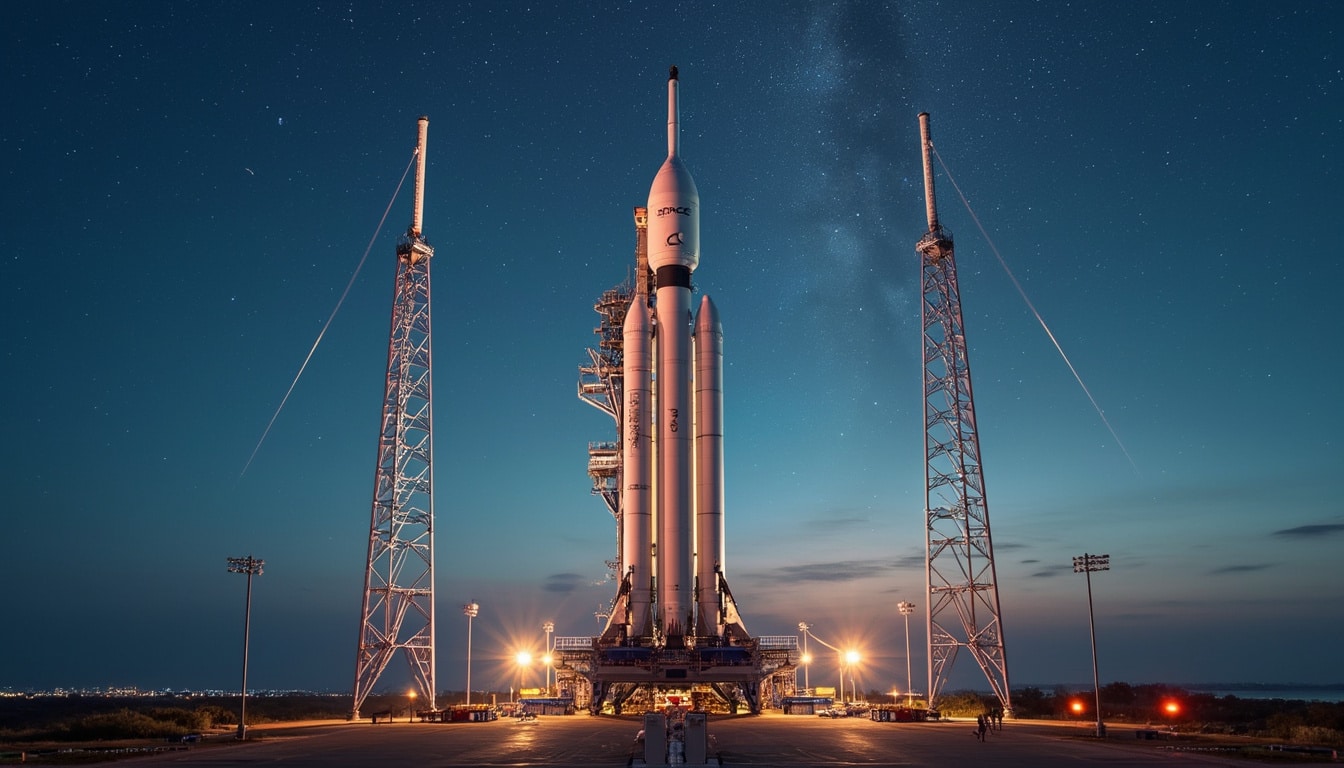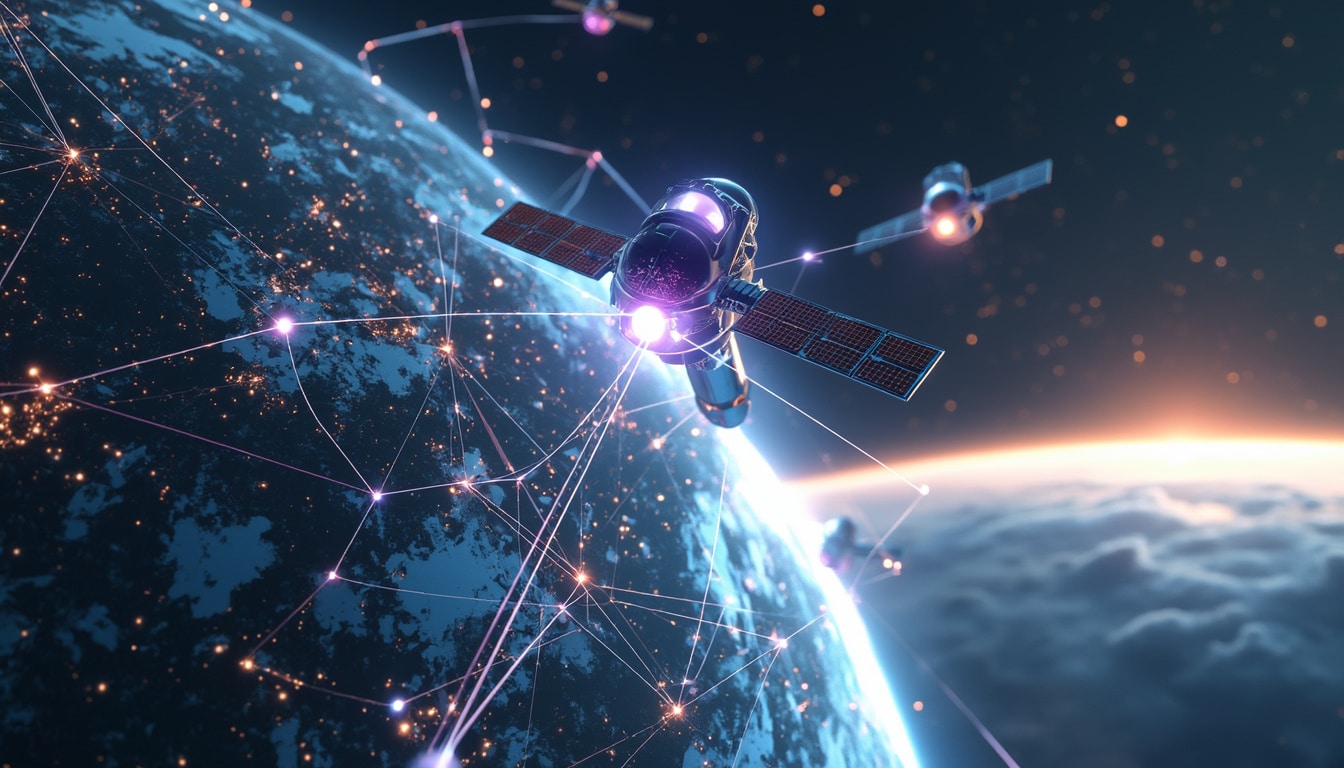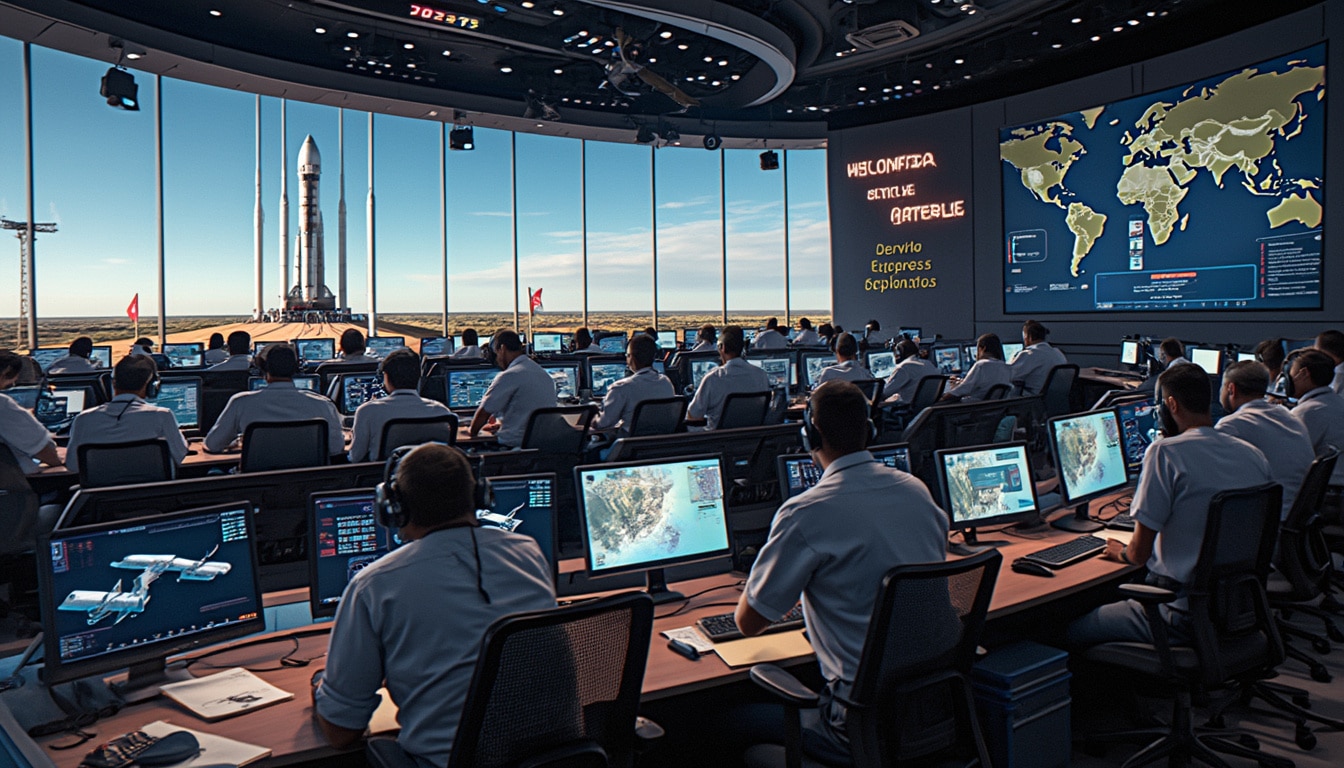In a stunning display of technological prowess, SpaceX has successfully launched 21 new Starlink satellites into orbit using its Falcon 9 rocket from the historic Kennedy Space Center. This significant achievement marks another milestone in SpaceX’s ambitious quest to provide global internet coverage through its vast satellite constellation. The mission, named Starlink 13-1, not only underscores SpaceX’s commitment to innovation but also highlights the company’s relentless determination to enhance connectivity worldwide.
With liftoff occurring shortly after midnight on January 21, 2025, the Falcon 9 rocket took flight from Launch Complex 39A, a site steeped in history and known for many iconic missions. As the Falcon 9 ascended, anticipation was palpable; the mission was critical in expanding the infrastructure necessary for reliable internet service across the globe.
Launch Details and Technical Specifications
On that notable early morning, the Falcon 9 rocket ignited its powerful engines at 12:24 a.m. EST (0524 UTC). Featuring a payload of 21 satellites, the Falcon 9 displayed its impressive capabilities with an astoundingly efficient launch profile. The first stage booster, identified by its tail number B1083, had previously accomplished successful missions, including the transportation of astronauts aboard Crew-8 and launching resupply missions into orbit.
Relying on the first stage of the Falcon 9, SpaceX effectively achieved a remarkable feat of engineering. After providing thrust through the initial stages of the flight, this booster landed gracefully on the SpaceX droneship, ‘A Shortfall of Gravitas,’ stationed in the Atlantic Ocean. The successful landing marked the 95th for the droneship and the impressive 399th booster landing for SpaceX. This highlights not just efficiency in launching missions but also the sustainable approach that SpaceX adopts, allowing for rocket components to be reused.

The Role of Starlink in Global Connectivity
The Starlink constellation aims to provide internet service to underserved areas across the globe, revolutionizing access to digital communications. With ongoing challenges in internet connectivity, particularly in rural or remote areas, Starlink presents a unique solution. The rapid deployment of these satellites plays an essential role in fulfilling this vision of global internet coverage.
Each group of satellites launched contributes to the overall efficacy of the Starlink network, improving data speeds and reducing latency. Through continuous upgrades and launches, SpaceX aims to provide a service that not only meets modern internet demands but also fosters new opportunities in education, business, and remote work.
Controversies and Challenges Faced by Starlink Projects
While the benefits of the Starlink project remain significant, the journey hasn’t been without challenges and controversies. Issues regarding space traffic, potential collisions with other space entities, and light pollution affecting astronomical research have surfaced. The Starlink satellites are often criticized for their visibility in the night sky, which can interfere with observations conducted by astronomers.
SpaceX has taken measures to address some of these concerns, including attempting to reduce the reflectivity of its satellites. Engaging with the astronomical community and regulatory bodies, SpaceX is actively working on solutions that balance its ambitious plans with the concerns of existing stakeholders in the space ecosystem.
Future Launches and Technological Innovations
Looking ahead, SpaceX’s agenda is packed with upcoming launches designed to bolster its satellite constellation. The Starlink 11-8 mission is already on the calendar, potentially utilizing enhanced technology with the next generation of satellites. As noted, these upcoming missions may feature Starlink V2 Mini Optimized satellites, designed to be lighter and more efficient than their predecessors, thus furthering the goals of global connectivity. SpaceX continues to innovate, striving to refine and expand its technology while maintaining a robust launch schedule.
The evolution of the Starlink network also raises the possibility of integrating new technologies, potentially including improved direct-to-cell capabilities. This advancement will enable satellite internet to reach mobile devices directly, solidifying connectivity options for users around the world.

Collaboration and Regulatory Frameworks
To support its ambitious launches, collaboration plays a crucial role in SpaceX’s operations. The company often liaises with various regulatory bodies, including the Federal Aviation Administration (FAA), to ensure all launches comply with safety and environmental regulations. This collaboration is vital not only for launch success but also for maintaining a sustainable operating environment.
As SpaceX pushes forward, it remains essential for the company to foster partnerships not just within the space industry but also with stakeholders in telecommunications and other sectors that can benefit from enhanced connectivity—some of which might emerge in engagements to maximize the utility of the Starlink network while minimizing regulatory challenges.
Key Takeaways from the Starlink 13-1 Mission
The successful launch of the Starlink 13-1 mission showcases both the effectiveness of SpaceX’s operations and the ongoing evolution of satellite technology. Delivering 21 new satellites into orbit is a critical step toward building a system that has the potential to connect millions globally. With plans for continuous improvement and expansion, SpaceX is at the forefront of the new era of connectivity, reshaping how we interact with the digital world.
As SpaceX continues to conduct launches at a rapid pace, the importance of this project cannot be overstated. The ongoing advancements highlight SpaceX’s profound impact on the telecommunications landscape, as well as the broader implications for society as a whole.

Community Response and Expectations
The public response to the Starlink launches has largely been positive, with many expressing excitement over increased internet access. However, some concerns have been raised regarding potential monopolization of the satellite internet market by SpaceX. Ensuring competitive practices and maintaining a variety of internet options remain important as SpaceX scales its operations.
Moreover, education and awareness campaigns are necessary to inform communities about the satellite internet service’s benefits and challenges. Strengthening these campaigns can help demystify the technology and lead to a more informed public discourse surrounding internet accessibility and equity.
Conclusion on SpaceX’s Future in Satellite Technology
Looking at SpaceX’s trajectory, the future seems promising as the company navigates the complexities of space and internet connectivity. The potential to redefine communication standards globally is immense. As advancements continue, SpaceX remains poised to transform the way society interacts with technology, opening up new avenues for collaboration, innovation, and exploration—truly, the sky is not the limit.




Leave a Reply